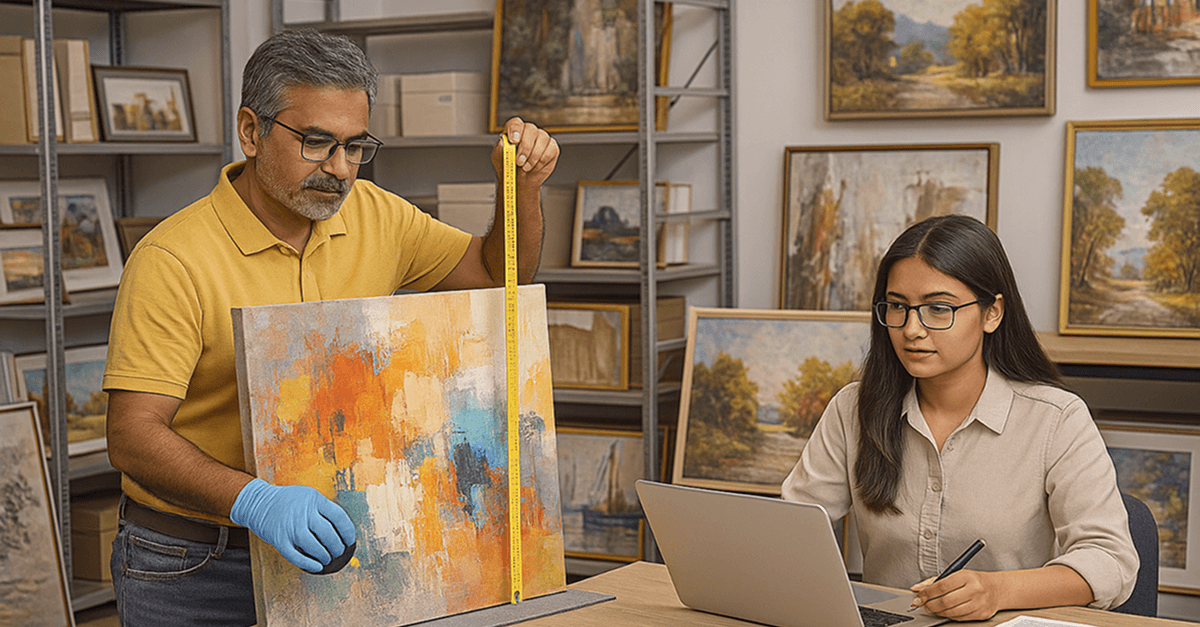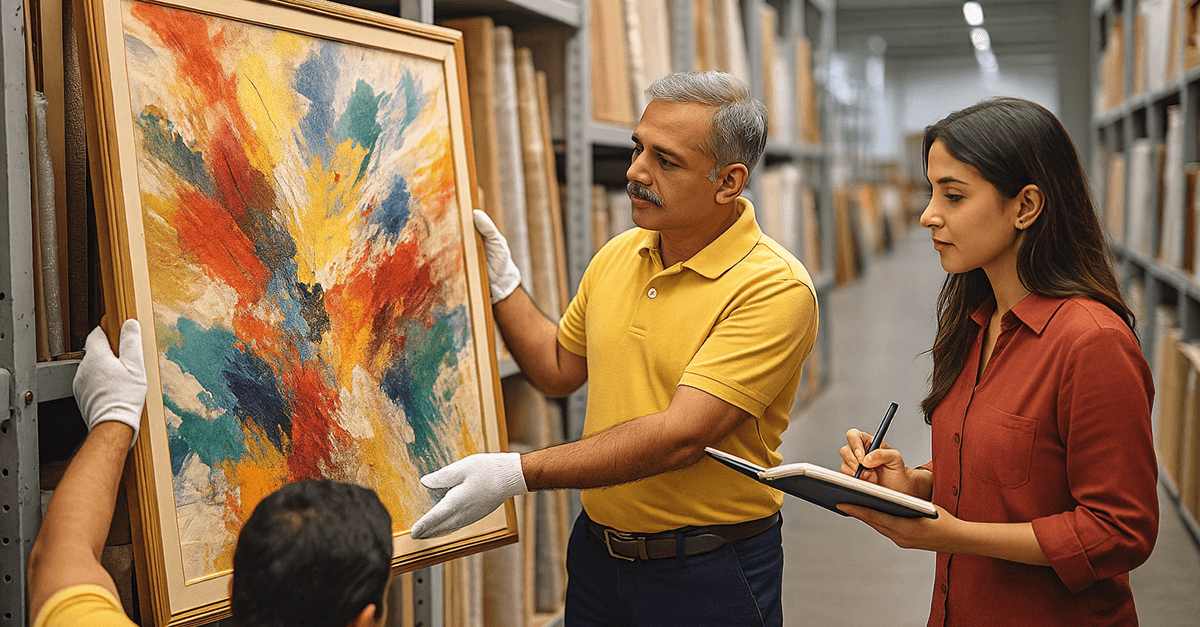Introduction: Why Digitisation of Heritage Matters
India is home to one of the world’s richest cultural heritages — from ancient manuscripts and miniature paintings to textiles, sculptures, and modern artworks. Yet, much of this heritage is at risk. Climate, pollution, pests, and time all take their toll. Worse still, countless treasures remain undocumented, stored in fragile conditions, or vulnerable to theft and illicit trade.
In today’s digital era, the answer lies in digitisation of heritage objects. By creating secure, high-quality digital records, India can protect its cultural treasures while making them accessible to future generations, researchers, and global audiences.
This article explores the challenges and solutions for digitising heritage objects in India, drawing from global best practices and the realities of the Indian context.
What is Digitisation of Heritage Objects?
Digitisation is the process of converting physical heritage items into digital records that can be securely stored, accessed, and shared.
This typically includes:
- High-resolution photography or scanning of paintings, manuscripts, and textiles.
- 3D scanning for sculptures and artifacts.
- Metadata creation for each object (artist, period, materials, provenance).
- Digital storage in secure servers or cloud platforms.
The result is a digital archive that complements physical preservation — ensuring heritage is not lost even if the original suffers damage.
Why Digitisation is Urgent in India
1. Fragility of Materials
- Ancient manuscripts on palm leaves or handmade paper are deteriorating fast.
- Textiles fade or fray under exposure.
- Miniatures and paintings are highly sensitive to humidity.
2. Environmental Risks
- Monsoons, floods, and high humidity cause irreparable damage.
- Pollution in metros accelerates discoloration.
3. Theft & Illicit Trade
Uncatalogued heritage objects are vulnerable to smuggling and illegal sales.
4. Limited Accessibility
Much of India’s cultural wealth remains hidden in archives, temples, or private collections, inaccessible to researchers or the public.
Digitisation addresses all of these risks by creating permanent, secure, and sharable digital records.
Challenges of Digitising Heritage Objects in India
1. Infrastructure & Technology Gaps
High-resolution scanning equipment and 3D imaging technology are expensive and not uniformly available.
2. Skilled Manpower Shortage
Digitisation requires trained professionals who understand both technology and heritage conservation — a rare combination in India.
3. Standardisation Issues
Different institutions follow different documentation standards, making integration difficult.
4. Funding Constraints
Large-scale digitisation projects require significant investment. Public institutions often struggle with budgets.
5. Data Security Concerns
Collectors and institutions worry about digital theft, hacking, or misuse of digitised images.
Solutions & Best Practices
1. Public-Private Partnerships
Collaboration between government bodies, private institutions, and technology companies can provide resources for large-scale digitisation.
2. Training & Capacity Building
Develop specialised training programs for conservators, archivists, and photographers to build expertise in digital heritage preservation.
3. Adoption of Global Standards
Use internationally recognised frameworks such as:
- Dublin Core Metadata for digital records.
- Object ID (ICOM) for documenting cultural objects.
- IIIF for interoperable image standards.
4. Technology Integration
- 3D scanning for sculptures and architectural elements.
- Blockchain for secure provenance tracking.
- AI-powered tools for automated tagging and damage detection.
5. Secure Digital Storage
Use encrypted cloud platforms and multiple backups to ensure data is not lost or compromised.
Step-by-Step Process for Digitisation of Heritage Objects
Step 1: Survey & Prioritisation
Assess the collection and prioritise fragile or high-value works for digitisation first.
Step 2: High-Resolution Imaging
Use professional photography, flatbed scanning, or 3D imaging depending on the object type.
Step 3: Metadata Creation
Record all essential details — creator, period, materials, condition, provenance.
Step 4: File Management & Storage
Store files in archival-quality formats (TIFF for images, OBJ for 3D scans).
Step 5: Access Platforms
Build searchable digital archives, with access levels defined for researchers, insurers, or public audiences.
Step 6: Ongoing Maintenance
Update archives regularly with new acquisitions, conservation treatments, or exhibitions.
Case Studies in India
Case 1: Museum Digitisation Project in Rajasthan
A state museum digitised its collection of miniature paintings and manuscripts. The digital archive not only preserved fragile works but also made them accessible to global researchers.
Case 2: Corporate Archive in Mumbai
A corporate house digitised its art and heritage collection spread across offices. The archive now supports valuation, insurance, and employee engagement initiatives.
Case 3: Private Collector in Delhi
A private collector digitised a collection of rare textiles and sculptures. Digital documentation enabled smooth insurance coverage and created a family legacy archive.
Benefits of Digitisation
For Collectors
- Easier management of private collections.
- Stronger valuation and insurance protection.
- Long-term legacy planning.
For Corporates
- Showcase collections as part of brand identity.
- Engage employees and clients through virtual exhibitions.
For Institutions
- Global accessibility for researchers and audiences.
- Preservation of fragile or endangered works.
- Reduced handling of physical objects, lowering risk of damage.
The Road Ahead: Future of Heritage Digitisation in India
Wider Adoption
As awareness grows, more collectors, corporates, and museums will adopt digitisation.
Integration with AI & Blockchain
- AI for monitoring condition changes.
- Blockchain for secure provenance tracking.
Virtual Exhibitions
Digital archives will enable immersive VR exhibitions, allowing audiences worldwide to experience India’s heritage virtually.
Policy Support
Government initiatives could provide funding and guidelines for nationwide heritage digitisation.
Conclusion: Preserving the Past, Preparing for the Future
Digitisation of heritage objects is no longer a luxury — it is a necessity. For India, with its vast cultural legacy and unique environmental risks, digitisation is the only way to ensure art and heritage survive intact into the future.
By embracing digitisation, collectors, corporates, and institutions become custodians not just of physical works but also of their digital legacies.Explore how our Art Archiving Services at TurmericEarth can help digitise and preserve heritage responsibly. With expertise in both conservation and technology, we ensure that India’s heritage is protected, documented, and shared with the world — today and for generations to come.








